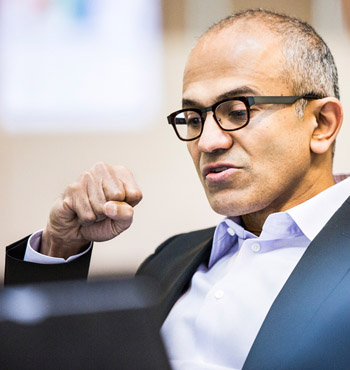Before we begin, let me explain why we’re writing this letter which may or may not be read by Satya Nadella. We’ve been covering the mHealth market — and in the wider sense the digital health market — for almost two years, and we seldom hear a thing about Microsoft. Although, a vast majority of hospitals rely on Microsoft’s products and services — mostly Windows PC and server products and the Office suite — the Redmond giant is playing a rather passive role in the emerging digital health revolution. In comparison, its biggest rivals — Apple and Google — are actively pursuing this enormous opportunity and will likely win big in the years to come. And since Microsoft has been playing the catch-up game with said two giants, perhaps now’s the time to enter the market as it’s still in the nascent phase and enjoy fruits of the labor later on.
Also, in my other job, I’ve been collaborating with local Microsoft office and came to realize just how complicated the current licensing scheme is. When you look into it more deeply, everything makes sense – but from the outset, it’s all too fuzzy. In that sense, moving towards the new-prevalent, cloud-based, Software-as-a-Service model makes perfect sense. And that’s exactly what Microsoft has been doing for the last few years.
Anyway, here we go with our open letter…
Dear Mr. Nadella,
All of us at mHealth Spot think that your role at the top of Microsoft has long been overdue. Microsoft’s current business model is still kicking but we all see the change is in the air. Simply put, more and more users want to pay for IT services like they pay for their utility costs – only when they use it.
Microsoft has been losing the mobile battle to Apple and Google.As we’re sure you’re aware, Microsoft has been losing the mobile battle to Apple and Google, which iOS and Android platforms (respectively) are dominating today’s landscape. Related to that, users switched off using Microsoft’s services and opted instead for those provided by the said two giants, with Google leading the way with its GMail service (among other things).
With the new, again overdue, “Mobile First, Cloud First” strategy, you are trying to tackle that challenge and we’re confident that you and your team has all the resources to do that; we foresee that the new Continuum feature will help you along the way. However, we think that adding “Health First” to the mix could be helpful, as well.
Yes, health services could be seen as any other services that will run on mobile devices and in the cloud. On the other hand, the opportunity is so big that, we think, requires its own “space” in the strategy tagline.
Right now, Microsoft has data centers throughout the world and the growing Office 365 user base. Windows 10 with its suite of services will also be taking advantage of that infrastructure and so will Azure clients. Is that enough, we ask?
By putting “health” in front, Microsoft could tell its partners, clients and the wider world that it is “open for action.” It should also include appropriate elements to its corporate structure to keep up with said clients and partners.
We haven’t caught a big genomics clients “going to Azure” though that doesn’t mean there are none. Google and IBM in particular are keen to offer researchers their Google Genomics and Watson Health platforms (respectively) to “do their thing” in the cloud without investing millions (or even billions) in infrastructure.
On the other end of the spectrum, we have a growing digital health eco-system with startups from all around the world looking to tackle an array of issues, including chronic conditions, aging, value-based care, accessibility, remote monitoring, and so on and on.
Mr. Nadella, we’re sure that you are well aware of all the changes the Affordable Care Act (ACA) — aka Obamacare — has introduced, paving up the way for millions of Americans to get access to affordable and more efficient care. This by itself opens up the door for smart companies looking to play an active role in this small revolution.
Also Mr. Nadella, we’re sure you know that current U.S. healthcare costs represent a whopping 17.1% of the country’s GDP, which is more than any other country. Obviously, there’s money to be made here.
The (digital health) opportunity is so big that, we think, requires its own “space” in the strategy tagline.Add aging population and lack of access to healthcare services in emerging markets to the mix, and you get an enormous figure. One, which we’re sure, is too big to ignore for Microsoft.
So what do we suggest?
Play an active role in the startup community
Create an accelerator and/or a fund that will help and push startups to use Microsoft technologies.
Create new “sub-platforms”
Beyond Windows 10 IoT edition, there’s room for sub-platforms that interact with healthcare systems, sensors and other devices that would make developers’ lives much easier. Also there platforms could provide more actionable data to other parties. For instance, Qualcomm’s 2net platform seems like something Microsoft could create, as well.
Consider acquisitions
The new digital health eco-system already has some early winners. It’s time to act and scoop-up promising companies before your competitors do that. We’ve mentioned some of them in our previous article.
The point is – the new Microsoft Band and Microsoft Health platform are not enough. If Microsoft isn’t more active in this market, chances are developers will rush on other platforms. In fact, they’re already doing that.
We want to see Microsoft using its vast resources to improve today’s healthcare. The opportunity is huge and, we think, it deserves a prominent place in the strategy tagline.
Health First! 🙂
Sincerely,
Dusan Belic & the rest of mHealth Spot
